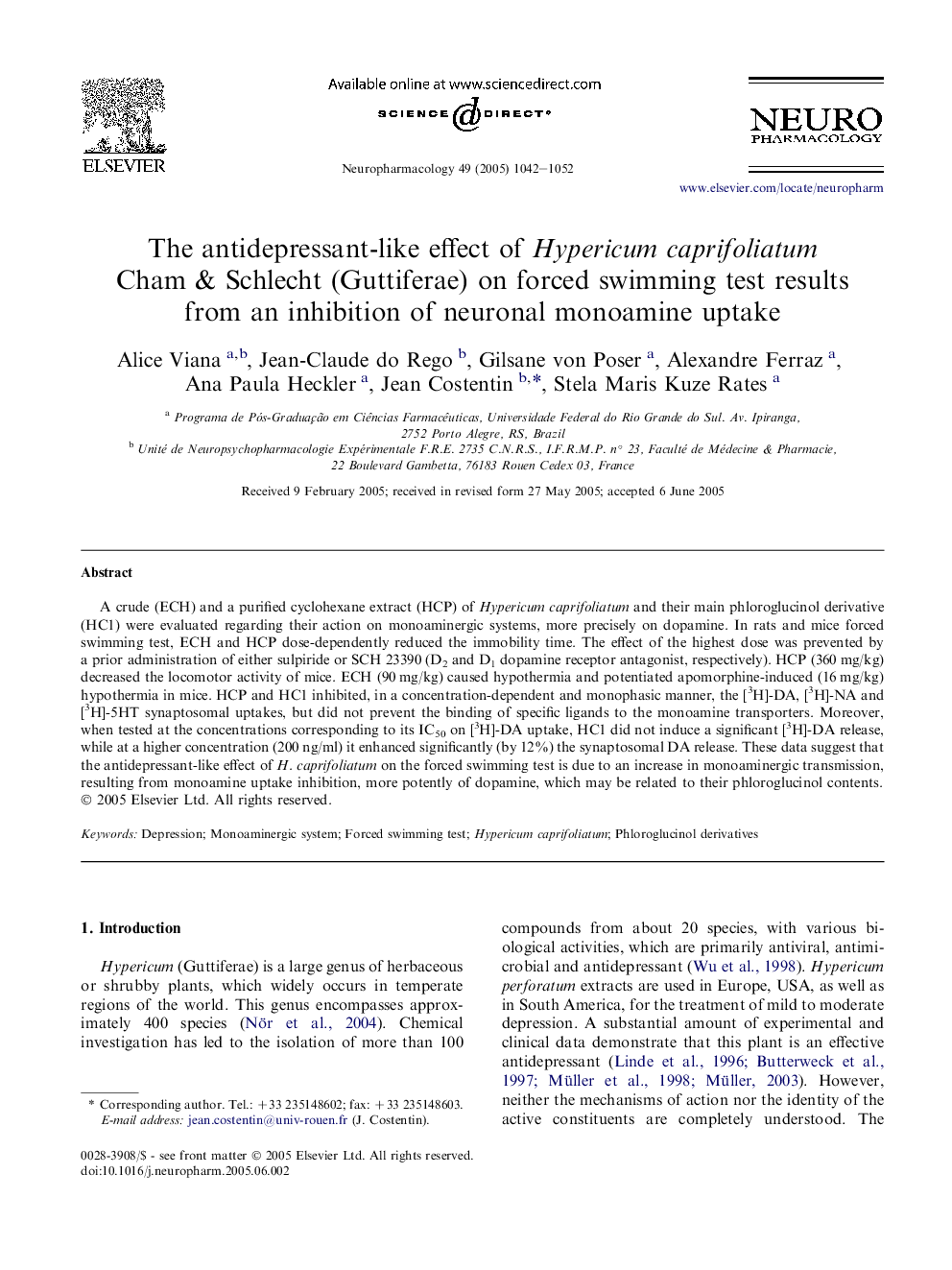| Article ID | Journal | Published Year | Pages | File Type |
|---|---|---|---|---|
| 8998234 | Neuropharmacology | 2005 | 11 Pages |
Abstract
A crude (ECH) and a purified cyclohexane extract (HCP) of Hypericum caprifoliatum and their main phloroglucinol derivative (HC1) were evaluated regarding their action on monoaminergic systems, more precisely on dopamine. In rats and mice forced swimming test, ECH and HCP dose-dependently reduced the immobility time. The effect of the highest dose was prevented by a prior administration of either sulpiride or SCH 23390 (D2 and D1 dopamine receptor antagonist, respectively). HCP (360Â mg/kg) decreased the locomotor activity of mice. ECH (90Â mg/kg) caused hypothermia and potentiated apomorphine-induced (16Â mg/kg) hypothermia in mice. HCP and HC1 inhibited, in a concentration-dependent and monophasic manner, the [3H]-DA, [3H]-NA and [3H]-5HT synaptosomal uptakes, but did not prevent the binding of specific ligands to the monoamine transporters. Moreover, when tested at the concentrations corresponding to its IC50 on [3H]-DA uptake, HC1 did not induce a significant [3H]-DA release, while at a higher concentration (200Â ng/ml) it enhanced significantly (by 12%) the synaptosomal DA release. These data suggest that the antidepressant-like effect of H. caprifoliatum on the forced swimming test is due to an increase in monoaminergic transmission, resulting from monoamine uptake inhibition, more potently of dopamine, which may be related to their phloroglucinol contents.
Related Topics
Life Sciences
Neuroscience
Behavioral Neuroscience
Authors
Alice Viana, Jean-Claude do Rego, Gilsane von Poser, Alexandre Ferraz, Ana Paula Heckler, Jean Costentin, Stela Maris Kuze Rates,
